Marcello Gandini, Maestro of Design Volume One by Gautam Sen
ISBN 978-1-85443-279-7 regular, ISBN 978-1-85443-280-3 deluxe
2 Volume set 400 pages in each volume
924 images (449 Volume I and 475 Volume II) – many never seen before!
Over one hundred of Gandini’s designs featured
600 copies of the regular editions, 400 numbered and signed by both Marcello Gandini and Gautam Sen
Published by Dalton Watson, 2016
Our Price: $350.00
Shipping Costs: FREE SHIPPING TO USA AND UK. Shipping to all other countries will be charged one flat rate for first item, additional books in the same order are shipped for no additional s/h charge.
Order Here
By Pete Vack
Right up front, let us tell you that this 800-page, two-volume set entitled Marcello Gandini, Maestro of Design is one of the best books on automotive designers we’ve ever read. We did a quick Internet search and found many new (and old) books on Italian designers, (see list at end of this article) but none that approached the coverage of Gandini. It is devastatingly interesting, beautifully illustrated, nails down the history of every design and/or car touched by Marcello Gandini. The author, Gautam Sen, weaves the designer’s comments (from an introvert who is almost incapable of commenting on himself or his work) into a fascinating story backed by interesting and relevant histories.
And because this work is not only so good, but so massive and relevant to our readership, it is simply not fair to write a book review consisting of a couple of paragraphs. So we will review it by volume, this being the cars of Gandini, Volume One. We’ll launch the review of Volume II next week.
Of all the rightfully famous Italian car designers, Marcello Gandini is perhaps the least well-known, yet his achievements are legion. That’s what makes this book so relevant and informative. We’ve all heard of Gandini of course, but aside from a few of the truly amazing Lamborghinis, it is more difficult to pinpoint his other work. Like the Lancia Stratos Zero and the Lancia Stratos Rally; like the Ferrari Rainbow, the Alfa Montreal, Navajo and Carabo, the Renault 5 Turbo, BMW 5-series, Fiat X1/9, the Dino 308GT4; an incomplete list is four pages long. We will highlight just a small percentage of the cars that are of interest to our readers.
Marcello Gandini
Born in 1938 to an old and respected Turin family, young Gandini was constantly surrounded by the arts and attended a “liceo classic” or cultural school. But later he decided he would rather draw cars than to complete a formal education, art or otherwise. This left him few job opportunities, and for years he shopped his not inconsiderable skills to the many Turinese coachbuilders. A chance meeting with Nuccio Bertone (a great talent spotter), resulted in an offer to join the firm and he did so on November 1, 1965. Gandini was 27 years old. The beautifully-crafted Miura chassis was first displayed three days later on November 3 in Turin, where it was agreed that Bertone would be responsible for the coachwork, despite the fact that his lead designer, Giorgetto Giugiaro, had “put in his papers” a month before.
Miura
Gandini’s first brief would be to design a body for the world’s most advanced supercar. Over the years there have been many articles about Giugiaro’s influence on the Miura. And why not? Original sketches are vague, often undated or unsigned, and how could an “uneducated” 27-year old have penned something like the Miura? Up to 2013 Gandini did not want to be the subject of a book, but decided to do so now to set the record straight. Ironically, without the controversy, Gautam Sen probably would not have been able to create his own masterpiece. Sen takes the story to another level, using interviews with both Gandini and his co-workers who were there at the time. [I’ll leave the results to be discovered by those who buy the book.]
With the Miura, Gandini was just getting his act together. Writes Sen, “When the Alfa Montreal followed, there was no longer any doubt that he was a brilliant designer.” Any further doubts were dispelled with the Lamborghini Marzal in 1967. And for the next fourteen years he would turn out one masterwork after another for Bertone, setting the world of supercars ablaze with daring, fresh, original designs. (Read about maintaining a Miura.)
Marzal
It was a much-needed boost for an industry on the brink of multiple disasters. For whatever problems were meted out by the labor unions, recessions, safety/emissions controls and gas crises, Gandini’s supercar designs covered up the insecurities that lay beneath the surface of the high-performance car industry. To see the Prince and Princess of Monaco driving around the Monte Carlo circuit in Gandini’s glasshouse Marzal was enough to make one forget about the impending downside of the supercar industry.
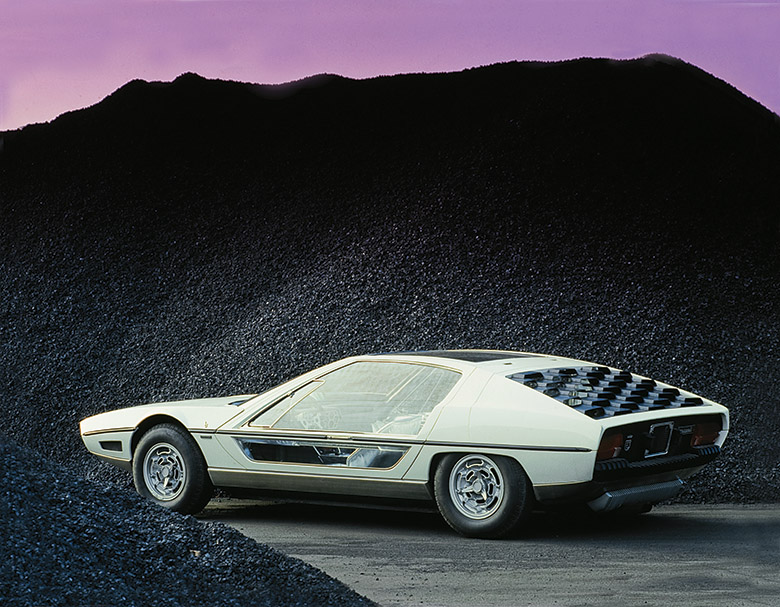
There is nothing quite like the Marzal. But the Espada that evolved from the Marzal was pretty remarkable for a supercar. Credit Archivio Stile Bertone
We are all perhaps too familiar with Gandini’s most famous work; what Gautam Sen brings us is the entire portfolio, interspersed throughout with interesting designs which we may not have seen before, and the ideas which put the bread on the table between the displays of illustrious supercars. We’ll take a look at a few.
Fiat 125 Exectutive
As with all designers, Gandini had his off moments. Much had to do with the design brief and the parameters provided by the manufacturer. Another is that often photos don’t tell the whole story, and in real life the car may be better looking than in the photos. Coming right on the heels of the Marzal and the Jaguar Pirana in November of ’67, Bertone and Gandini proposed the Fiat 125 Executive. It was an attempt to modernize the stodgy 125, and brought the low beltline from the Marzal, which increased the glass area and provided more trunk space. Gandini would continue to develop this line, but on the 125, it failed to ignite the Fiat executives.
Alfetta Sedan
The book also reveals designs that were accepted but modified beyond recognition. An interesting example was the Alfetta sedan in 1968; again the low beltline and enlarged glass idea was put to use but with a bit less exuberance. By the time Alfa’s Giuseppe Scarnati was done revising it, the Gandini lines had all but disappeared, probably for the better.
Carabo
But then, in October of 1968 came the Carabo. Isn’t hindsight nice; this landmark car just gets better and better through the ages. Comparing the Carabo to any one of the latest Supercars today; it still just blows them away. It was the progenitor of things to come, or as Sen writes, “With the Carabo, Gandini not only established a brand new design language, but also his stamp as the leader of automotive design, with the rest of the world and it’s designers following, trying to play catch up.” Perhaps it is not the Miura or the Countach that Gandini should be famous for, it is the Carabo.
Stratos Zero
Maximizing the concepts developed with the Carabo, Gandini again struck pay dirt with the fantastic Lancia Stratos Zero. Unlike many radical show cars, both the Alfa T3- based Carabo and the Stratos Zero were fully functional and drivable cars (read Roberto Motta’s test drive of the Stratos Zero). As wild and daring as they were, they were dead serious. Again, the design seems to be in advance of anything shown at the Salons since. Bertone and Gandini thought they might make some inroads with Lancia if they presented a radical mid-engined car at the 1970 Turin Auto show. Besides, both Giugiaro at Italdesign and Pininfarina were now in the wedge business, introducing the PF Ferrari 512-based Modulo, while Giugiaro did the Iguana on another T33 chassis. Gandini’s Stratos Zero was the answer that sent the others back to the drawing board.
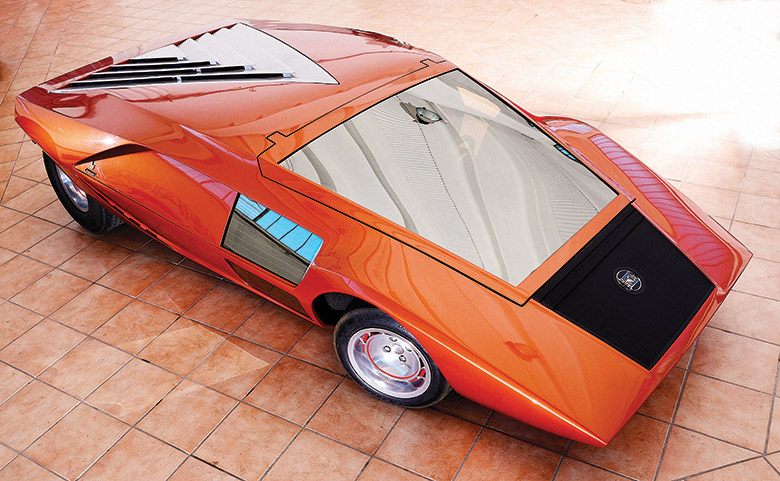
Another landmark for Gandini, and our own Roberto Motta drove it. Credit Tom Wood @2011 courtesy of RM Sotheby’s
Countach
If the Stratos wasn’t enough, it was quickly followed in March, 1971 by the stunning and original LP 500 Countach. We see the first definitive Gandini rear wheel opening, from then on a Gandini imprint. But after the Carabo, Stratos Zero and Stratos HF, the Countach now seems less likely to impress. (That’s another reason Sen’s voluminous work is nice…we get to stare and compare while learning the functions and background of each design.) The stiletto knife doors were used on the Carabo; to some degree the front also reflects the Carabo while the ventilated rear portion is more functional than beautiful. But it is faster and larger and every line screams speed and power, so the total effect is more impressive. It would be the first in a long line of Countach designs guided by Gandini.
Alfa Project 119
As svelte as the Alfetta was clumsy, the Alfa coupe project 119 applied the Espada lessons to the Alfa GTV with what appears to be success (remember we haven’t seen the actual car). The beltline was now a bit raised but the rear kickup and tail was very Gandini. This one should have been offered as an optional line for the Giugiaro GTV, but in 1971, Alfa had its hands full and passed.
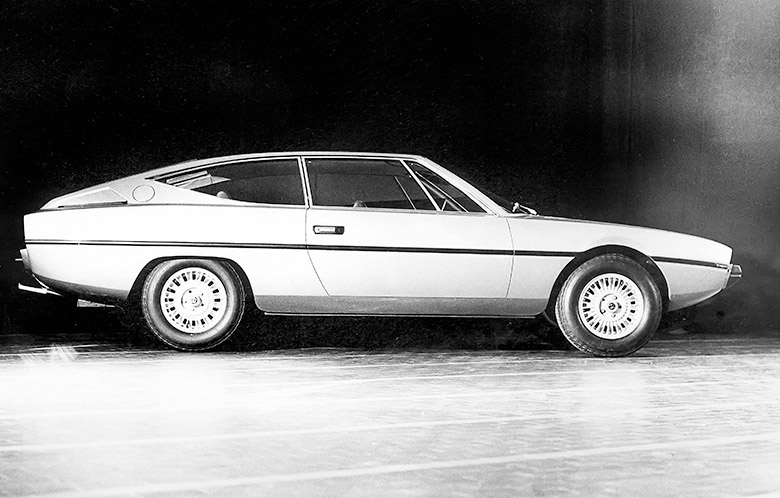
One can see the lines of the Giugiaro production model, but this would have been a welcome addition to the Alfetta/GTV line. Credit Archivio Stile Bertone
Camargue
The Stratos Zero led to the Lancia Stratos HF, the famous rally version that although quite unlike the Stratos Zero, forged its own path both in design and on the rally circuits, totally successful in both. It is another landmark Gandini, and coming at the end of 1971, it was yet another triumph for the now 33-year-old uneducated designer. But not all that was gold glittered. In March of 1972 the Citroën Camargue was unveiled at the Geneva Auto show. It was painted gold and even the windows of this striking car were gold tinted. Based on the new and best-selling front-drive, air-cooled Citroën GS, the Camargue was an attempt to envision an up-market GS. Here, as in the Stratos HF, the beltline was tightened and glass area was reduced. Author Gautam Sen figured that the Camargue coupe had the potential to be a “very successful 2+2 sports coupe,” but we felt that photos of the car make it appear more chunky than streamlined. Citroën’s bankruptcy ensured that it would never go into production.
Autobianchi A112 Runabout
It is sometimes forgotten that the pert and first mid-engined Fiat was a Gandini design, and perhaps one of his best. The book also connects the X1/9 to an earlier effort by Gandini, the Autobianchi A112 Runabout, inspired by speedboat designs—truly a barchetta. A show car only, the Runabout was unveiled in October 1969. It shared little with the Autobianchi A112, and used the Fiat 128 engine and drivetrain but placed midship. The overall side profile would reflect the later X1/9, and we agree with Sen that the “concept car is a delightful design in its own right.” Fiat should have marketed both!
Khamsin
Gautam Sen reveals that Gandini was also responsible for quite a few Maseratis. What Maseratis?, you might ask. You do remember the Chubasco, Shamal and Ghibli II? No? Well what about the Khamsin? That’s a good start, for Gandini’s Khamsin was the successor to the Giugiaro Ghibli, and used the same chassis, updated with the loved or dreaded Citroën brakes, steering and clutch. It is not known why Maserati turned to Bertone after having Italdesign pen the preceding Bora (and Merak). “It is possible that Maserati wanted to deal with one entity that not only designed the car but made the bodies,” wrote Sen. Since Italdesign was a design office only, the Boras were constructed by a company called Officine Padane. It had been a long time since Bertone had a brief on Maserati; a few A6Gs, 3500GTs and one 5000GT.
Many of Gandini’s most famous designs were mid-engined, but the Khamsin was solidly upfront. Maserati wanted the Ghibli updated, meaning perhaps along the same lines. The design reflected much of Gandini’s thinking at the time, and many lines are similar to those of his Lamborghini Urraco. Gautam Sen notes that the initial design was made in early 1971; it would be introduced at the Turin show on November 23, 1972, but didn’t reach production until 1974, and according to Richard Crump’s figures, 352 examples were produced. In the meantime, there was the oil crisis and the sale of Maserati to De Tomaso in 1975. Going unnoticed was the fact that by some definitions, the Khamsin was the last real Maserati as the Biturbo and the De Tomaso years would follow.
Volume One ends with the Ferrari 308GT4. But just as you think that Gandini’s brilliant run was about over, Volume Two offers up another 400 more-than-worthy pages of the art of Gandini. He had just begun.
Books similar to Marcello Gandini, Maestro of Design:
GIORGETTO GIUGIARO: THE GENIUS OF DESIGN by Giuliano Molineri / Publisher Rizzoli Hardcover – March 3, 2015; 480 pages
$60
PININFARINA
by Antoine Prunet / Publisher Rizzoli
Hardcover – January 13, 2001; 308 pages
$86
VIGNALE: FERRARI AND ALL THE OTHERS
by Alfredo Zanellato Vignale / Publisher Il Cammello Product Book in hardback; 307 pages
49,90 €
BERTONE: 90 YEARS 1912-2002, 2 VOL.
by Luciano Greggio / Publisher Giorgio Nada Product Book hardback with slipcase; 379 pages ISBN 8879112732
200,00 €
FRANCO SCAGLIONE, DESIGNER
by Giuliano Silli / Publisher ASI
Product Book in paperback; 95 pages
20,00 €
GIOVANNI MICHELOTTI 1921-1979, VOL 8
Publisher Fornai Alberto
Product Book in paperback; 117 pages
Publication Year 03/2006
30,00 €
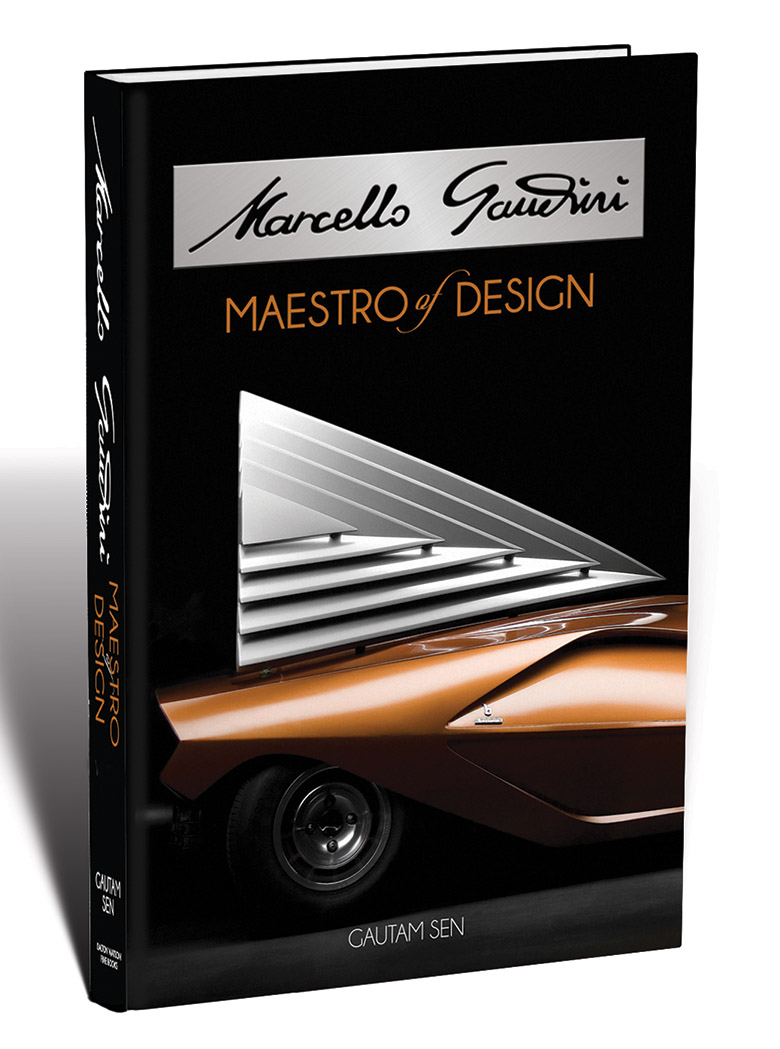
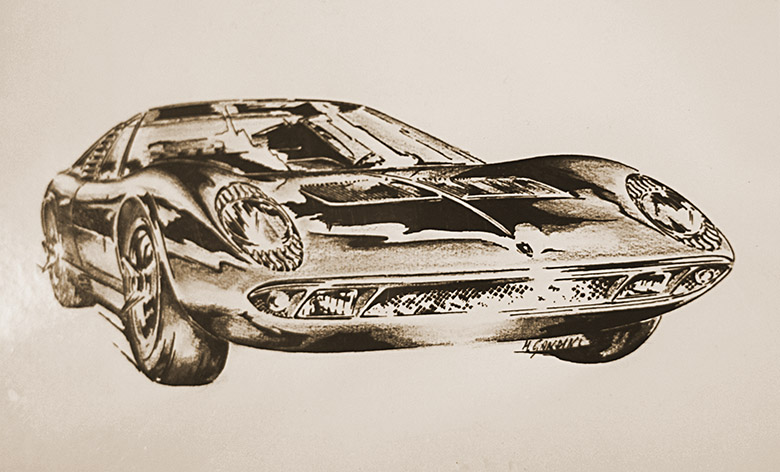
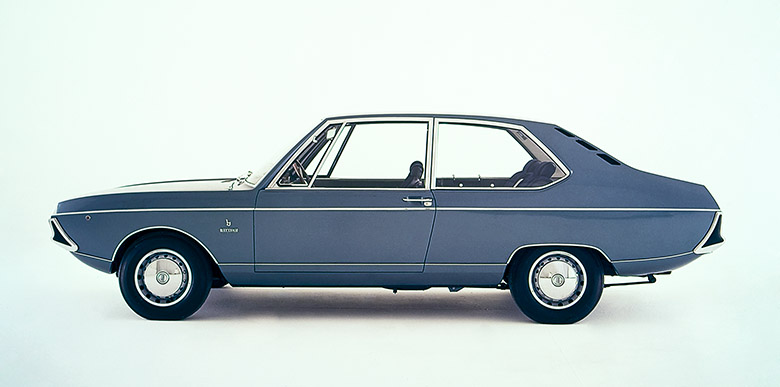
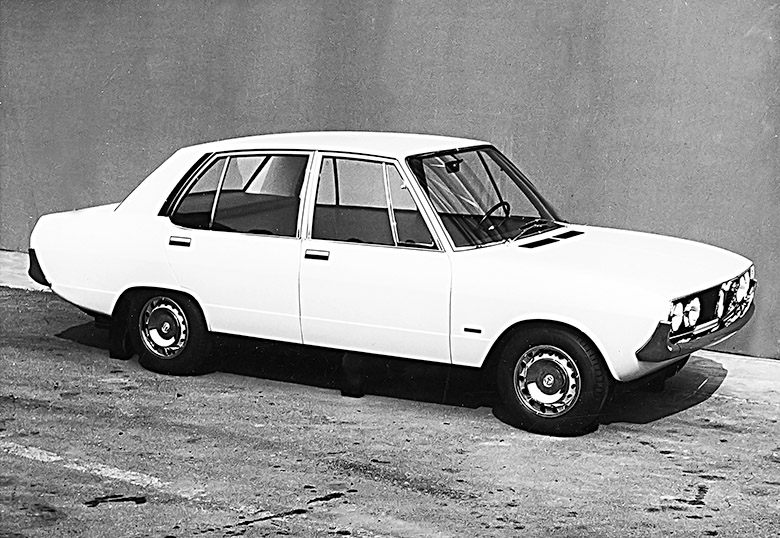
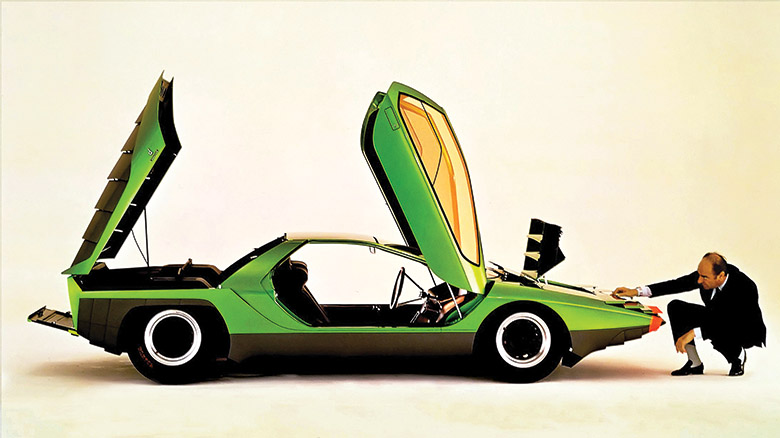
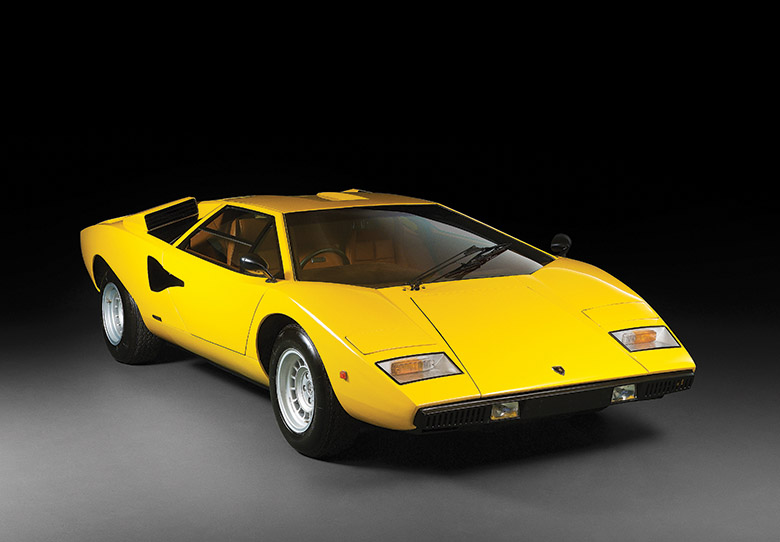
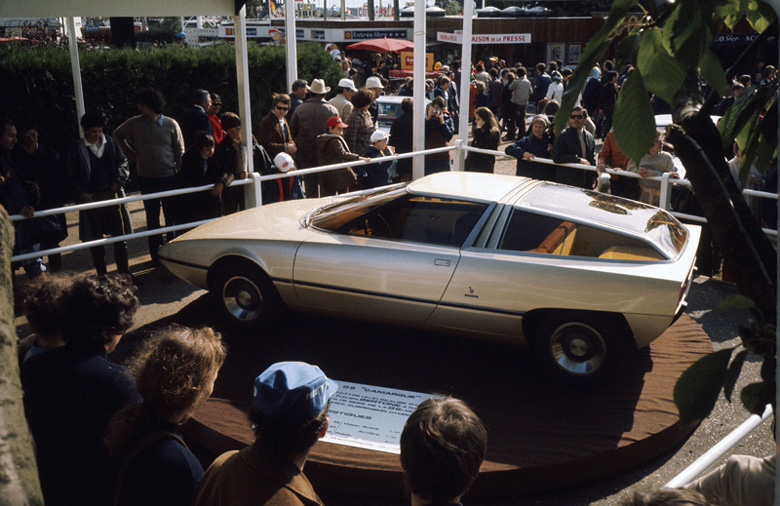
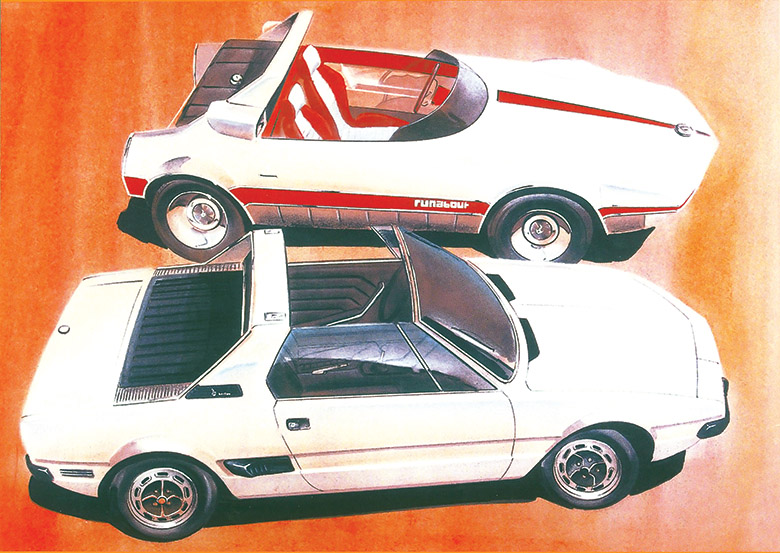
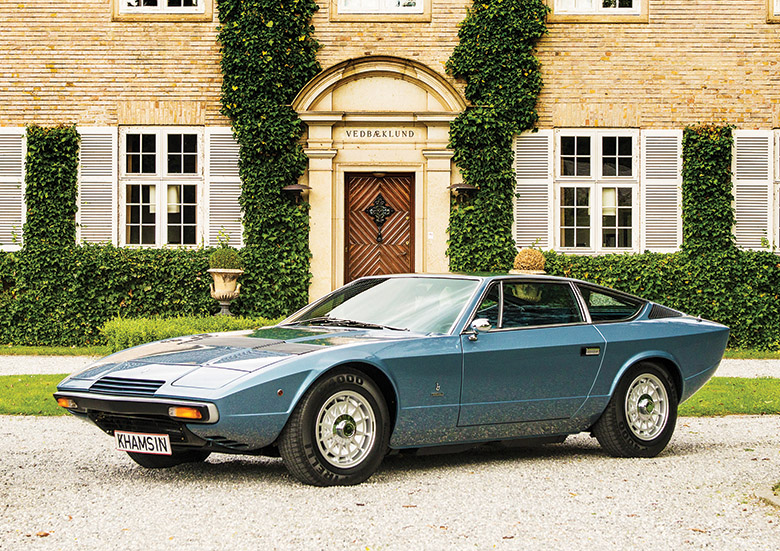
I was fortunate to receive a copy for my birthday last week. This is one of the most amazing 2 volume sets I have ever seen. It has thousands of pictures and illustrations many of which I have never seen before. The descriptions by the author tell a compelling story of the life of an automotive designer that was responsible for automotive design innovations for over five decades.
Yes it is expensive, but the quality and shear volume is well worth the price for any Gandini fan.
Many interesting stories of historical interest – quite unique and at times surprising !!
Congrats on an indepth study of this genius designer and his “works of art” , that he so lovingly gave to the world of Automobiles . In fact some designs seem to be precursors to the latest lines we observe in the exotic and Super cars of today !
best wishes ,
Khamsin chassis with IRS in a Jaguar-style subframe as different from the original Ghibli as can be…
Otherwise thanx for the considerable review!
BTW: Fiat in person of Gianni Agnelli, who overruled his own management in this case, took considerable risk bringing the mid-eninged X1/9 to market. Hardly any sense in the assumption the Autobianchi Runabout should have entered production as well.
We agree, the two Ghiblis couldn’t have been more different!
Pete